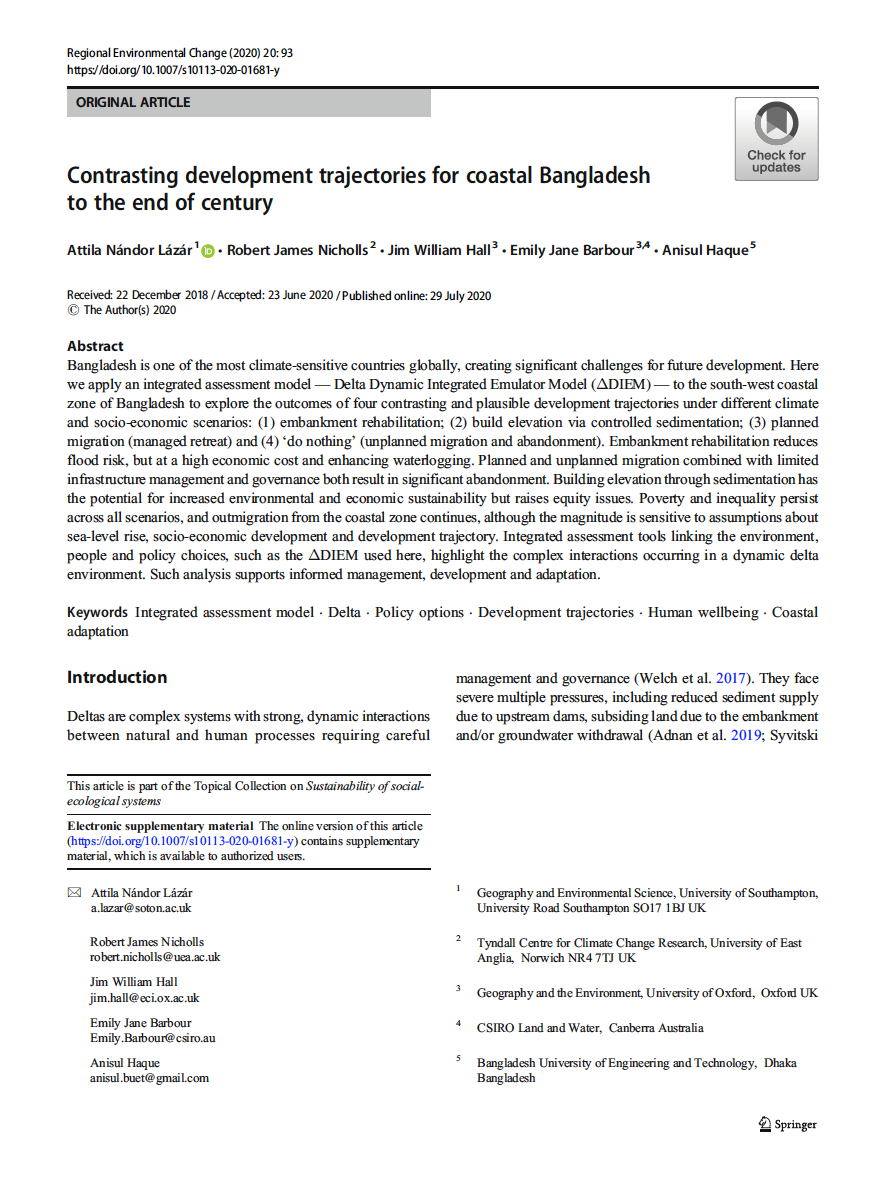Authors: Attila Nándor Lázár, Robert James Nicholls, Jim William Hall, Emily Jane Barbour & Anisul Haque
Bangladesh is one of the most climate-sensitive countries globally, creating significant challenges for future development. Here we apply an integrated assessment model — Delta Dynamic Integrated Emulator Model (ΔDIEM) — to the south-west coastal zone of Bangladesh to explore the outcomes of four contrasting and plausible development trajectories under different climate and socio-economic scenarios: (1) embankment rehabilitation; (2) build elevation via controlled sedimentation; (3) planned migration (managed retreat) and (4) ‘do nothing’ (unplanned migration and abandonment). Embankment rehabilitation reduces flood risk, but at a high economic cost and enhancing waterlogging.

